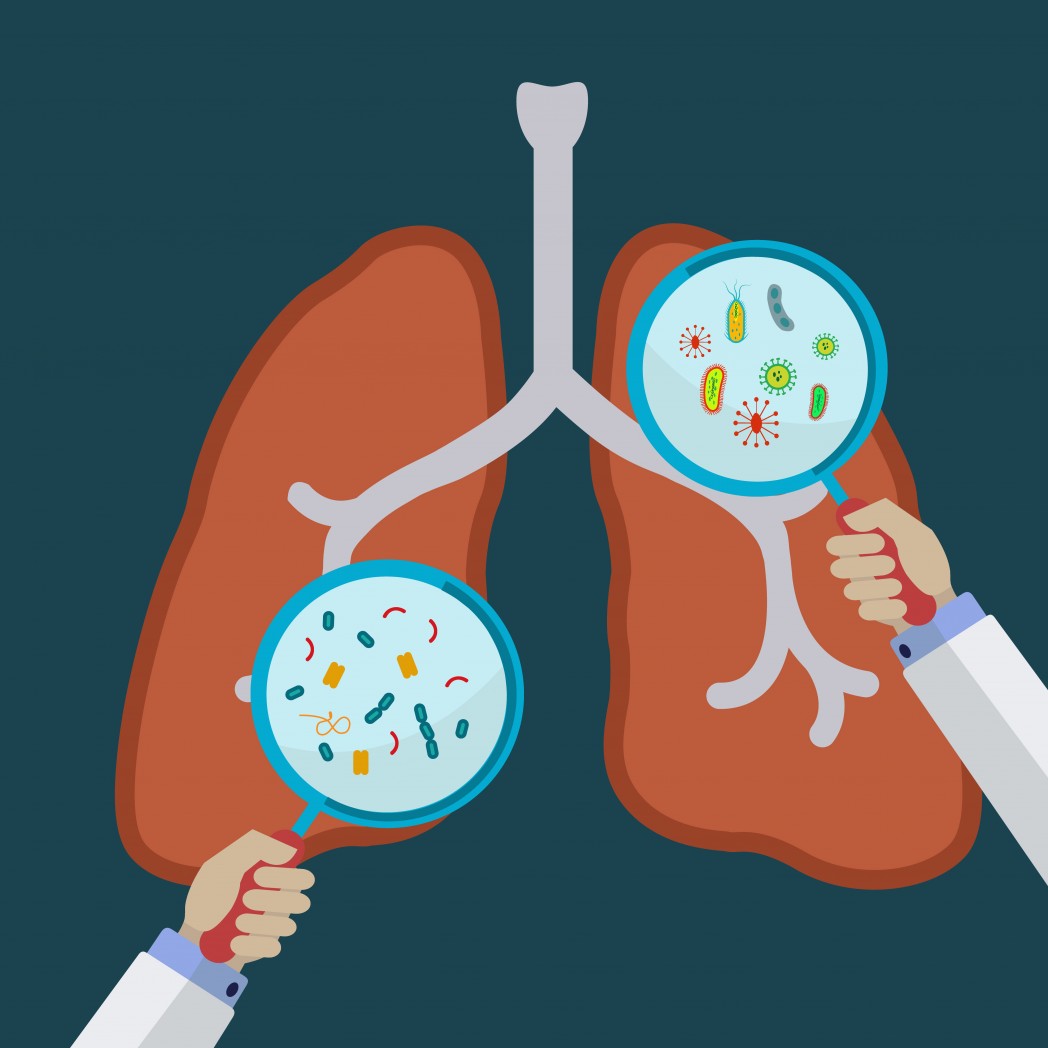Certain Mitochondrial Protein May Help Protect Airways in COPD
Written by |

Scientists have found that a certain protein helps cells in the airways to clear away mucus, such as the mucus that builds up in chronic obstructive pulmonary disease (COPD).
This discovery, they noted, suggests that boosting the activity of this protein, called adenine nucleotide translocase (ANT), could become a future therapeutic strategy for COPD.
Their findings were reported in a study, “Adenine nucleotide translocase regulates airway epithelial metabolism, surface hydration and ciliary function,” published in the Journal of Cell Science.
To function properly, the surface of the airways must remain hydrated. Cells lining the airway’s outer layer clear away mucus, small particles, and disease-causing microbes by “beating” tiny hair-like appendages, called cilia. Lung disorders like COPD are more likely to occur when these cilia are unable to beat and “sweep” all those away.
Cigarette smoke is a leading cause of COPD and a known cause of dysfunction in the airway’s cilia-bearing cells.
Since there is no effective therapy to prevent or reverse COPD, researchers from Johns Hopkins University and their colleagues at the University of Pittsburgh turned to an amoeba, a single-cell organism that uses its cilia for the same reason human airway cells do, to look for genes that might protect against the effects of cigarette smoke.
Evolution often preserves important genetic pathways, even between distant species. Given the functional similarity between the cilia found in human airways and those in amoebae, Corrine Kliment, MD, PhD, and her colleagues reasoned that any genes that protected the amoeba from the effects of cigarette smoke might be worth studying in mice and humans.
“Cells are good at repurposing cellular processes across species, and in our experiments, we found that mammals have repurposed the ANT gene to help deliver cellular cues to build the appropriate hydration layer in airways,” Doug Robinson, PhD, professor at Johns Hopkins and senior author of the study, said in a press release.
The researchers started by exposing the soil-dwelling amoeba Dictyostelium discoideum — a common model research organism — to cigarette smoke extract over the course of three weeks, selecting the cells that could grow in that environment at rates comparable to untreated amoebae.
They then discovered that the “winner” cells that grew best in the presence of cigarette smoke carried a gene called ancA, which codes for the ANT protein. In humans, ANTs are typically found on the membranes of mitochondria — the cells’ small internal energy generators — where they help transport “fuel” molecules in and out of them.
Next, the researchers found that boosting ANT activity — specifically ANT1 and ANT2, two of the four ANTs found in humans — in human bronchial epithelial cells (those lining the airways) protected these cells from cigarette smoke-induced death.
The team then measured the amount of ANT gene expression — the degree to which a protein is made from an active gene — in human lung tissue samples. They found that ANT expression was significantly reduced in the lungs of people with mild to very severe COPD, and in those of smokers without COPD.
“These collective observations support the notion that [ANT] expression is reduced by exposure to cigarette smoke, which could contribute to COPD pathogenesis [development mechanisms],” the researchers wrote.
Consistent with the function of ANT proteins in mitochondria, increasing their production enhanced the mitochondria’s ability to produce energy, the team found.
Furthermore, ANT proteins, particularly ANT2, helped release tiny amounts of fuel molecules into the cell’s watery surroundings, strengthening the beating of that cell’s cilia, even in the presence of cigarette smoke. The presence of ANT2 at the cell surface, in addition to the mitochondrial membrane, surprised the team.
“An exciting moment was taking the first images of human lung, where we discovered the presence of ANT at the plasma membrane of airway cells,” Kliment said in an interview. “Given that ANT is a canonical mitochondrial protein this was certainly surprising!”
The overactive cell-surface ANT2 also enabled human bronchial epithelial cells to maintain a more fluid environment representative of a healthy airway.
Therefore, finding a way to restore ANT2 function to damaged ciliated airway cells, such as through gene therapy or new medications, could be a way of treating COPD in the future.
“Our study highlights a potential for upregulation of ANT proteins and/or of their agonists in the protection from dysfunctional mitochondrial metabolism, airway hydration and ciliary motility in COPD,” the investigators concluded.




